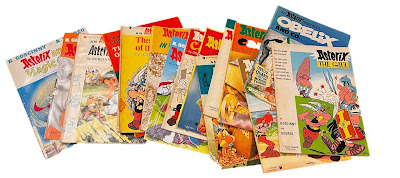This was my article yesterday in La Repubblica - Italy's biggest newspaper. The title translates as 'One Step from the Cliff' - and it is an artcle about climate change in fiction, and about my novel 'The Wager and the Bear' (Soon to be published in English I hope).
David Bowie had a remarkable
talent for writing songs that could conjure up a story. It is impossible to
listen to ‘Space Oddity’ without imagining Major Tom, sitting in a
tin-can, drifting forever into space.
But the Bowie song that stays with me most is ‘Five Years’. It tells
a very simple story. News has reached us that the earth has only five years
left. The planet is dying. In the song, the newsreader weeps. All around the
market square people lose their minds.
What would it be like, I have
often wondered, if we really were told this news? If a solemn news report,
backed by all the world’s serious scientists, was to tell us we were running
out of time? How would we react?
Well we now know the
answer to this question. Newsreaders wouldn’t weep. No one would go crazy. We
would ignore the danger and carry on with our lives as if nothing had changed. We
know this because this is what we do. Every few months the Intergovernmental
Panel on Climate Change (IPCC) produces a new report telling us the planet is
running out of time. Every year the COP climate change conference makes dire
predictions. Every year we learn that the previous year was the hottest on
record. We watch forest fires in Canada and Brazil. We see dramatic floods,
powerful storms, devastating droughts. We watch the collapse of animal
populations. World leaders fly in and out of conferences. They make vague
promises. But very little changes. And the world continues to die.
The challenge seems to be
a failure of human imagination. Perhaps it is the timescale. If the world was
doomed in just five years, we might be more alarmed. If it was an asteroid hurtling
towards us, we might make a real global effort to find a solution. But climate
change seems to be a long unfolding tragedy. We are like passengers in a
slow-motion train crash. The train is heading for a precipice, and all the
pieces are in place for a terrible disaster, but everything is moving so slowly
we stop worrying.
All this presents a
particular problem for story tellers. Climate change is the biggest story of
our time, yet very few novelists are ready to grapple with this. Ten centuries
from now, if humanity is still around, I suspect historians will only be
interested in one story from our generation - how we responded (or failed to
respond) to this existential threat to the planet. Science fiction, in general,
has done us rather a disservice here. Writers have sold us either Mad Max-style
desert dystopias, or impossible tales of starships taking survivors to new
green planets. What we don’t have are real world stories that could help us to
imagine the kind of earth we are creating. And that is a shame, because imagination is
what we need, now more than ever.
Once again, timescales seem
to be the challenge. Novelists need a central protagonist with whom readers can
identify. This character needs to have a story arc, and human dramas are
typically too short for climate change to feature very much. There is a second
problem too. It is hard to imagine any
character playing anything but a very minor role in what is a huge global
drama. No one is going to step forward like Bruce Willis and save the world. For
a writer, that is an unhelpful backdrop. We do not like to set up a jeopardy
for our characters, without giving them some way to fight back. But how do you
fight back against a warming planet?
In ‘L’Orso Polare e una
Scomessa Chiamata Futuro’ (The Wager and the Bear) I hope I may have found
a way to navigate a little around these two problems. The narrative unfolds
over a whole human lifetime, and the central characters are front-seat
observers of the climate disaster. The story involves two young men. One,
Monty, is a politician. He is a climate change-denier. He lives in a grand house
on the beach in Cornwall. He has a splendid lifestyle, and like so many of us
in the slow-motion train crash, he doesn’t see the precipice approaching. The
second man, Tom, is a climate scientist and campaigner. One drunken night, over
too many glasses of cider in the local inn, the two men get into a quarrel. It
ends with a deadly wager. In fifty years, either the sea will rise enough to
drown Monty in his home, or Tom will accept the jeopardy himself, and will walk
into the sea and drown. A video of the wager, posted online, goes viral. How
will it all work out?
Well we have fifty years
for the story to unfold. The lives of the two men cross several times, leading
them both onto a melting glacier, and ultimately onto an iceberg floating down
the coast of Greenland where their only companion is a hungry bear.
The story is not entirely
without hope. It is set against the backdrop of a campaign to restore some of
what the world has lost. Neither Monty nor Tom can save the world. But there is
at least hope, as well as despair.
Climate change doesn’t
have to be front and centre in contemporary fiction. But we shouldn’t be
ignoring it either. As writers we have a responsibility, sometimes, to make the
future seem real. We are hurtling towards a world of human-made disasters, of
dying oceans, of rising seas, of failing harvests, of droughts, of economic
collapse, and of climate-driven conflicts. We cannot ignore these things. If
these aren’t part of our fictional landscape now, then they need to be. Otherwise one day we may find we have just
five years left. And it won’t just be the news readers weeping.
Check out my website: www.johnironmonger.com


.jpg)






















.jpg)











.jpg)